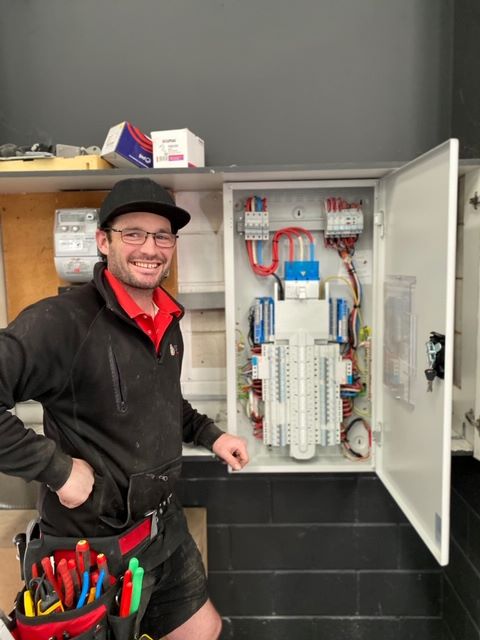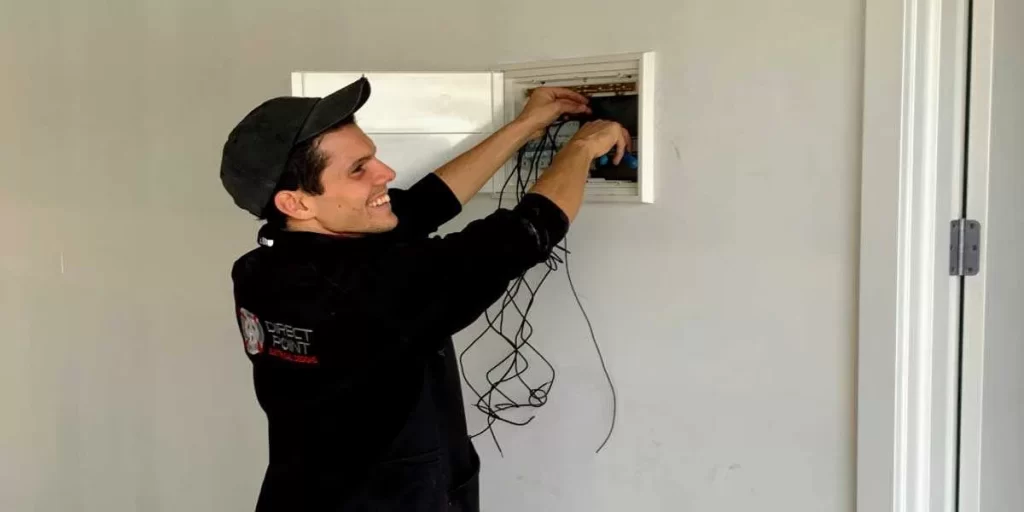When planning electrical installations for your home or business, it’s common to wonder about the importance of having a main breaker in a sub panel. This question often arises as property owners explore options for upgrading their electrical systems or adding circuits to accommodate growing power demands. Grasping the function and requirements of sub panels is vital for maintaining a safe, efficient, and high-performing electrical infrastructure that meets modern standards.
Generally, a sub panel does not need a main breaker because it draws power from the main panel, which already includes a main breaker that manages the overall power distribution. The main panel’s breaker acts as the primary cutoff for the entire electrical system, encompassing all sub panels. Nevertheless, certain local electrical codes or specific installation circumstances may necessitate the inclusion of a main breaker in sub panels, particularly to enhance safety or operational convenience. Always consult local regulations to guarantee compliance and safety.
While it is not a standard requirement, incorporating a main breaker into your sub panel can provide several advantages. It enables a quick and straightforward method for cutting off power to all circuits within that panel without disrupting the entire electrical system. This feature is especially useful during maintenance or emergencies since it allows for the safe isolation of different sections of your property’s electrical network, thereby improving safety and ease of access in critical situations.

Explore the Essential Functions and Advantages of Sub Panels in Electrical Systems
Sub panels serve a pivotal function in electrical systems, facilitating effective power distribution to specific areas or appliances within a building. They significantly improve circuit control and organization while enhancing the overall capacity to manage electrical loads efficiently. By strategically positioning sub panels, property owners can optimize their electrical infrastructure, ensuring it meets the diverse demands of various appliances and equipment with ease.
Deep Dive into Sub Panels: Understanding Their Critical Role and Benefits
A sub panel, also known as a subsidiary panel or distribution board, functions as an additional electrical panel that branches off from the main electrical panel. Its primary role is to act as a secondary distribution point for electricity throughout a building, offering greater flexibility and improved efficiency. Sub panels are typically installed to:
- Boost circuit capacity for a range of applications and equipment.
- Isolate the power supply to specific areas or devices, enhancing safety and convenience.
- Improve the organization and management of the overall electrical system.
Common locations for sub panels include garages, workshops, or larger homes where the main panel may be situated far from certain areas that demand power. By installing sub panels, property owners can achieve a more efficient power distribution system, simplifying circuit management and facilitating easier access and control over their electrical infrastructure.
Crucial Factors for Assessing Electrical Load Requirements Prior to Sub Panel Installation
Before initiating a sub panel installation, it is vital to thoroughly evaluate the electrical load requirements. Key elements to consider include:
- The total amperage needed for the designated area or equipment.
- The number and types of circuits required for specific applications.
- The distance from the main panel to the selected location for the sub panel.
Accurately calculating the expected load is imperative to ensure that the sub panel can safely accommodate it. Typically, sub panels range in capacity from 60 to 200 amps, depending on their intended application. It is essential to match the sub panel’s capacity with your specific electrical needs to ensure both efficiency and safety. Additionally, factoring in potential future expansions when sizing your sub panel can save time and reduce costs, preventing the need for upgrades or replacements as your electrical demands evolve.

Key Elements for Ensuring a Safe and Effective Sub Panel Installation
To guarantee a safe and efficient installation of a sub panel, several critical considerations must be addressed, including circuit breakers, adherence to regulatory standards, and the implementation of necessary safety measures. Understanding these installation requirements is paramount for establishing a safe and compliant electrical system that functions effectively.
Evaluating the Necessity of Circuit Breakers in Sub Panels
While sub panels do not always require a main breaker, the necessity can vary based on specific circumstances, such as:
- The distance from the main panel: A local disconnect may be necessary if the sub panel is installed far from the main panel.
- The number of circuits: Sub panels equipped with more than six breakers typically necessitate a main breaker to enhance safety.
- Local codes: Some regions mandate the installation of main breakers in all sub panels.
A main lug sub panel depends on the main breaker from the main panel for overcurrent protection, which is a common configuration when the sub panel is located close to the main electrical panel. Being aware of the specific requirements for your installation is crucial for compliance and safety.
Understanding Regulatory Standards for Sub Panel Installations
In Australia, specific electrical standards govern the installation of sub panels, including:
- AS/NZS 3000: This standard outlines comprehensive requirements for all electrical installations.
- Maximum rating: Main breakers for sub panels must not exceed the ampacity of the feeder conductors to ensure safe operation.
- Labelling: Clear identification of the power source for the sub panel is a mandatory requirement.
Adhering to these standards is essential in guaranteeing safety and legal operation. It is highly recommended to consult local authorities for specific regional requirements, and remember that all electrical work must be executed by a licensed electrician to ensure compliance and safety!

Implementing Key Safety Measures for Sub Panel Installations
Implementing robust safety measures during sub panel installations is vital for mitigating electrical risks and ensuring operational safety:
- Effective grounding: Ensure that the sub panel is properly grounded to reduce the risk of electrical shocks.
- Ample spacing: Maintain adequate clearance around the panel to facilitate easy access and sufficient ventilation.
- Weatherproofing: For installations located outdoors, utilize weather-resistant enclosures to protect against moisture and environmental factors.
Additionally, it is crucial to use the correct wire sizes and types tailored to the expected load. Installing arc fault circuit interrupters (AFCIs) and ground fault circuit interrupters (GFCIs) in accordance with code requirements is also essential for safety. Regular inspections and maintenance of the electrical installation greatly contribute to ongoing safety and compliance. Always engage a licensed electrician for sub panel installations to ensure that all safety standards are rigorously adhered to, providing peace of mind for property owners.
Common Questions Regarding Sub Panels and Main Breakers Answered
The complexities surrounding sub panels, including considerations about breakers, sizing, and regulations, can be overwhelming for property owners. Gaining a clear understanding of the essential requirements is crucial for ensuring a safe and compliant electrical setup that adheres to all local codes and safety standards.
Is it a requirement for a sub panel to include a main breaker?
A sub panel does not necessarily need a main breaker. The requirement largely depends on its location concerning the main panel and local electrical codes. If the sub panel is located within the same structure as the main panel, a main breaker is typically not needed.
However, if the sub panel is situated in a separate building, it generally must include a main breaker for safety and compliance reasons, ensuring that all electrical installations meet local regulations.
Can a main breaker panel function as a sub panel?
Yes, a main breaker panel can operate as a sub panel, although it may not always be the most efficient option. In this scenario, the main breaker serves as an additional disconnect point rather than the primary cutoff for the electrical system.
Choosing a panel specifically designed as a sub panel is often more cost-effective and space-efficient, providing better functionality tailored to your electrical needs.
What size breaker is appropriate for a 100 ampere sub panel?
For a 100 ampere sub panel, it is standard practice to use a 100 ampere breaker in the main panel to supply it. This breaker should match the sub panel’s rating to ensure optimal protection and functionality, delivering a reliable power supply.
Additionally, the wire size must be suitable for handling a 100 ampere load, guaranteeing that the entire electrical system operates safely and effectively without risk of overload.
What regulations govern electrical sub panels?
Electrical sub panel regulations can vary by region, but they primarily focus on safety and accessibility. Key regulations typically include:
- Proper grounding and bonding procedures to enhance safety.
- Correct wire sizing to effectively accommodate anticipated loads.
- Adequate spacing around the panel to ensure accessibility and safety.
- Clear labelling of all circuits within the panel for better management.
Always refer to local codes and consider professional installation to ensure full compliance with all regulations, creating a safe electrical environment for everyone.
What is the capacity limit for a sub panel connected to a 200 ampere main panel?
A sub panel linked to a 200 ampere main panel does not have a fixed capacity limitation. The size of the sub panel is contingent on several factors, including:
- The available capacity in the main panel to support additional loads.
- The intended load requirements for the sub panel based on its usage.
- The wire size used between the panels, ensuring it can safely handle the load.
It is possible to install a 100 or 150 ampere sub panel, provided that the main panel has sufficient remaining capacity to support it, allowing for flexibility in accommodating future needs.
How can one accurately size a breaker for a new sub panel installation?
To effectively size a breaker for a new sub panel, follow these steps:
- Calculate the total load that the sub panel is expected to support, taking into account all connected devices.
- Select a panel that is rated for that load or higher to ensure safety and prevent overload.
- Choose a breaker in the main panel that aligns with the sub panel’s rating for optimal performance.
It is wise to consider future expansion needs when sizing the panel. Often, installing a slightly larger panel than currently necessary can provide additional flexibility for accommodating future electrical demands, enhancing your system’s adaptability.
The Article: Does a Main Breaker Need to Be in a Sub Panel? first appeared on https://writebuff.com
The Article Main Breaker Requirements for Sub Panels Explained Was Found On https://limitsofstrategy.com


This is such an insightful piece on the intricacies of electrical systems! I’ve recently been exploring ways to enhance the energy efficiency of my home, and the topic of sub panels has come up in discussions with various electricians. It’s fascinating to think about how the layout of our electrical systems not only affects functionality but also overall safety.
It’s great to hear you’re diving into the world of energy efficiency—there’s so much to uncover! Sub panels can be a game changer, especially when you’re looking to optimize your energy use and distribution at home. They allow you to separate circuits for specific areas or major appliances, which can help reduce the load on your main panel. Plus, having that dedicated setup can really enhance safety by minimizing the risk of overloads.